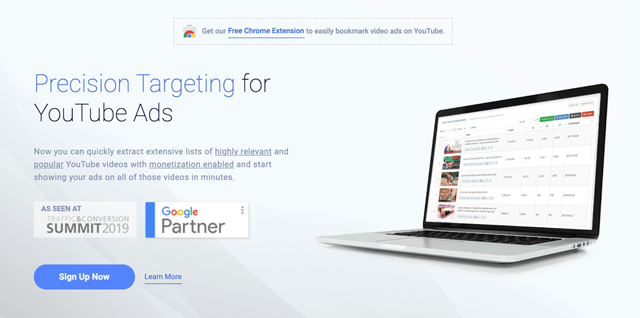
 Membership TodaySign Up Now
Membership TodaySign Up NowWhat are Custom Audiences?
Targeting with Google Ads has continued to change its features over the years. Custom Audiences for instance was created by merging Custom Intent Audiences and Custom Affinity Audiences.
Custom Audiences are used for display and YouTube advertisements. Rather than choosing from a preset list of Google options, you can build your audiences based on interests and search history.
One feature that has changed is the targeting options on the Display Network. Let’s go over the options available to improve ad efficiency and what each targeting type means.
1. Targeting by interests and behaviors
The first option is to target users based on their interests or habits. You can use this to enter your ideal customer’s preferences as keywords or phrases.
Your ads will reach people who are likely to be interested in or have purchasing intent for your keywords based on their actions and behaviors, such as the apps they use or the type of content they look for online.
This will help you retarget users based on their Google searches and then show them relevant ads while they’re watching videos on YouTube, checking their inbox, or researching new topics on their phones.
2. People who browse types of websites
Google requests that you include the types of websites that your target audience will visit. This can be a very effective way of targeting if you know where your customers hang out online.
This is not a way to target those specific website placements, but rather a way of using consumer data from those pages to find new users. For websites, stay away from popular sites and instead focus on industry-specific and closely related sites.
3. People who use types of apps
This type of targeting option is similar to the website targeting options, but it requires apps instead.
Consider the different apps that customers can use to help them make a purchase or show interest in your product or service, and how you can use those to create Custom Audiences. This could be either a permanently installed app or something more temporary.

4. People who have visited specific places
This method of targeting is based on the types of places your customers have recently visited. Enter the locations where your ideal customer can spend time.
This does not mean that your advertising would only be shown to those who are physically present in those locations. These would be categories of geographical locations rather than actual locations but depending on who you’re trying to reach, these can be extremely useful.
5. Use Tubesift to Target your Audience on YouTube
Advertising with placement targeting on YouTube by using TubeSift is one of the best ways to get a high ROI on ad campaigns and sell to truly interested buyers. Precision targeting results in higher conversion rates, lower costs, and high ROI. Stop spending hours manually looking for monetized videos and start reaching out to the right audiences on highly relevant videos right away.

Video ads have the highest conversion rates of all ads since videos are the best way to connect with an audience. With YouTube being the second largest search engine on the internet and the biggest for video-specific content, it is the best place to harness the true converting power of your ideal audience.
The more you understand your target market, the more you’ll be able to target your advertising and connect with the people who are most likely to become customers. The best way to reach your ideal audience is by using the data-sifting power of TubeSift to find out where your ideal customer is watching their favorite YouTube content.
 Membership TodaySign Up Now
Membership TodaySign Up NowResources
- 4 Ways to Pinpoint Your Targeting with Google Ads Custom Audiences from Business 2 Community
- How to Advertise on Top YouTube Channels from the TubeSift Blog
- What is Placement Targeting from the TubeSift Blog



Comments are closed.